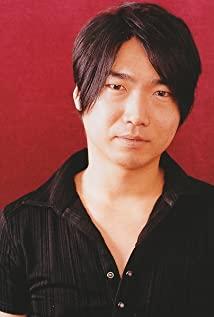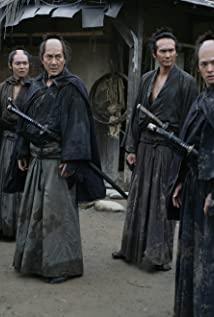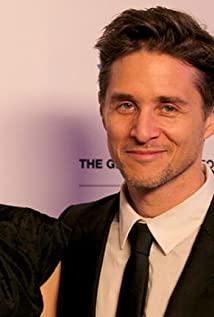Character version
Q: First of all, about the work "PROMARE/Promea", please briefly describe the process of conceiving the film.
Nakajima: First, the producer told me that the new work was going to be a movie, so the two of us started thinking about the script. I first came up with the idea of the flame, and then I told Imaishi.
Imaishi: After I got the idea, I thought this form of action would be very suitable for filming. I think if you want to make a movie, you have to make an action movie. With this idea in mind, we were well prepared.
Nakajima: Yes. In this, I designed a partner and put in the confrontation and reconciliation between the two boys. Our two ideas can be said to be at the same time. Since you are going in this direction, make a (character) that can control the fire and one that can put out the fire.
Q: The two have collaborated on many works so far, and this is the first time an animated film with an original script has been written. Filmmaking and TV animation are different, can you talk about this?
Nakajima: Yes. However, because I knew from the beginning that I was going to make a movie, I still had some preparations in my heart. After doing it, it will feel like this.
Imaishi: Right. In fact, I have only done TV animation myself, and the production company TRIGGER is also mainly doing TV animation. From the feeling of the scene, it is not very suitable for filming. Adjusting with the film production, I think it is still a lot of work.
Q: When you mentioned that you wanted to make a movie, you thought of doing something related to the fire element. Why did you come up with the idea of challenging the theme of "flame"?
Nakajima: So far, I have done the theme of "spiral force". In "Tianyuan Breaks Through the Eye of the Red Lotus", it talks about the evolution of human beings; then I also make the clothes come to life; after that, what elements do I want to make If there is vitality, there will be only water and fire left. In this case, I think it is better to use fire.
Imaishi: If the fire comes out, the water can also be taken out.
Nakajima: Yes, yes.
Q: When writing the script, did the two of you have disagreements?
Nakajima: Yes, of course there will be. At first, I wanted to make a film about the growth of teenagers like "How to Train Your Dragon". And then we go in that direction. But Jinshi suddenly said one day that these had to be cut! Then the script was torn up! Said that he wanted to do Michael Bay's "Boom! Boom! Boom!" movie in the first place. I said, well I know, let's do it again. I gave up the idea of shooting a juvenile growth magic movie.
Imaishi: Mr. Nakajima is doing things too fast. He's advancing things ten times as fast as we do. When I came to my senses, he had already written a script.
Nakajima: You said the boy grows up, right? I feel that it is faster to write first, so I will start writing when I think of a certain level. Then I showed him what I had written, and after reading it, Imaishi said it didn't fit the idea in my head, so I would throw it all away. He told me his idea again, that is, to be more... Simply put--closer to an action movie, and want to do an action movie more than the growth of a teenager. Then we move to the next stage.
Q: Another thing that strikes me is that the film itself has a very simple style, but the film actually uses a lot of CG. And I personally feel that there is actually a contradictory impression between CG and simple style. So I would like to hear Mr. Imaishi's opinion on this?
Imaishi: Hmm. In terms of CG, or rather, I specifically want to use it. Maybe compared to the CGs that have been produced in recent years, I still think that those in "Lens Man" and "VR Warrior" from many years ago, (Nakajima: You like that.) I would like this more. A feeling of CG. In fact, in that era when the means of expression were particularly restricted, they would think of more ways to express themselves. For example, in the 3D world, (Nakajima: so it is), for example, using an image with an indescribable shape to make it look like a motorcycle, or like a person. People in those days worked hard. Now, just take a few more photos to get the image you want. In this way, it may actually be said that the interest that CG can bring to the audience is reduced. In addition, we also need to bridge the gap between CG and 2D animation as much as possible. And in the process of making this connection point, the 3D special effects are also (Nakajima: some of the information should be omitted) Yes, some of the information should be omitted! In short, to reduce the amount of information. The motion trajectory and three-dimensional space can be accurately completed by CG. Since the amount of information about motion and space can be created, we let CG create as much information about dynamic effects as possible. In fact, if we let the picture stand still at this time, it will become a CG picture that makes us all terrified and has almost no substantive content. We are actually continuing the process of overcoming this fear.
Nakajima: But it is true, in (the game) "Virtual World 1", the people are actually cubes, but when they move, they look very dynamic. It must be done that way.
Imaishi: Yes, that approach really stimulates the imagination, it's really good.
Nakajima: Mmmm.
Q: The use of colors in this work may just be my personal feeling. It seems to have a soft and light color impression. Is this also a conscious choice of colors?
Imaishi: Yes. I'm not sure if animation is only like this in Japan. I'm an animation in Japan. I especially think about color. When drawing illustrations, due to the rapid development of digital technology in recent years, color is a great choice in illustration creation. However, for animation, considering that the picture must be connected frame by frame, there is no way to use too many colors. Otherwise, the control of color in the process will become very difficult. But I just thought, if it is a movie animation, I seem to be able to work harder. So I also spelled it out a bit and chose some color combinations that are only used in illustration creation, but in short, the picture effect is very beautiful. Of course, in fact, it is more convenient to use black to control the color. For example, with black, it is very good to express shadows. But if we specifically choose bright colors and want to express shadows, how can the shadows and surrounding colors not interfere with each other? This adjustment process is actually very laborious. That said, we're sure it'll also look noticeably better. So work towards that goal.
Q: So it is. In fact, this work is also very distinctive in the setting of the characters. Is this a character you designed with this style in mind from the very beginning?
Imaishi: Hmm. In fact, it is because the work decided to use both hand-painted and CG expressions at the same time. Therefore, the character design also considers whether the two aspects can be integrated at the same time. It looks attractive when done with CG, and it is easier to draw with hand-painted. We mainly considered this problem at the beginning. This aspect may differ from previous creative processes.
Q: Mr. Nakajima saw that his script was made into the current animation, how do you feel?
Nakajima: I'm really surprised! Mr. Imaishi's picture is so textured and modern, completely different from what I originally expected. In fact, when I write the script, I think the background is very specific and real. The effect that Jinshi helped me to present is very abstract and symbolic, but it can remain vivid as an image. Some are beyond my imagination, very shocking! I was so excited to see it!
Q: Of course, the two also talked about the realism of the pictures. Nowadays, many Japanese animations focus on presenting pictures with a sense of reality. For example, even if they are making animations, they will go to the scene to shoot and shoot. For example, director Makoto Shinkai will paint Shinjuku beautifully, but this time, the two works can be said to use completely opposite methods.
Nakajima: But we still shot the fire brigade on the west coast.
Imaishi: Yes! Off to framing!
Nakajima: That's why we have Pooh.
Imaishi: Yes! Hence the Pooh character!
Nakajima: This is not so much a scene framing, but a joyful walk around.
Imaishi: Right. This time the on-site shooting is like this, bringing back the atmosphere and environment that you feel in the local area. Now I also use digital products to take the scenery, take it back and process it and put it in the animation. Of course I think that's a good format too.
Q: In other words, in the animation works, Mr. Imaishi still wants to render the real scene a little to complete the world he wants to express?
Imaishi: If I made it to my own liking, it should be like this. Those animations are very realistic and delicate, and of course I enjoyed them when I watched them. I feel so great, so great. And of course, in the field of painting, the trend of pursuing a very realistic representation of the scene will continue to exist in the future. The audience will definitely enjoy the shocking pleasure brought by the realistic picture, which I do not deny its value as a movie. But personally, I may not be very good at drawing reality.
Nakajima: Well, how do you say it? Sure enough, I still like things with a little bit of character.
Imaishi: Yes, I like it very much as my style.
Q: I feel that this work is really hot-blooded. It feels like the whole movie is on fire from beginning to end. Well, in the process of making, the two of them didn't actually have any special awareness to be very enthusiastic. I want to say is it because everyone enjoys the production process so much that this look is achieved?
Imaishi: Yes. We did not specifically appeal to everyone to be enthusiastic during the production process! Everyone in the studio is also calmly progressing their work. It should only be said that this is the style of our work all along.
Q: Leo Fotia (voiced by Taichi Saotome) may seem cold, but he can feel his warm side from time to time. What impressed me a lot about this work was the strength of the seiyuu lineup. In fact, although everyone was born as an actor, it is unexpected that they are just ordinary actors, and they are not inferior to professional dubbing actors and devote themselves to their roles and worldviews. How did you take into account when choosing a role?
Nakajima: That's actually because I have been involved in the rehearsal work of the Shinkansen Theater Company. Then I chose a few actors who have had stage experience there and have adapted to my directing style, and let them dub the main characters to have this effect. Of course, it is also assigned to the type of roles they have performed before. From this perspective, it can be regarded as a bottom line. Each type of character actually has its own language style, in order for the actors to grasp these styles. This time, we only found these actors who can quickly enter the role. Also, compared to the usual seiyuu, the actors can give more flesh and blood voices, and their exploration paths for acting are different. And I also hope to bring this other way of exploring acting skills into the work.
Q: After reading some comments on this work on the Internet, many people said that the whole work has the atmosphere of a new sense line theater. What do you think?
Nakajima: Yes. This is as it should be. In particular, the Xingan Line troupe is a stage play, which usually lasts for three hours. And this "PROMARE/Promea" also takes about two hours, right? If the TV series is long, there is plenty of time to tell the story. Compared with this situation, it is also because the film work is only two hours long, so maybe myself, including myself, will show some new sense of line stage style.
Q: What does Mr. Imaishi think about the performance of the voice actors?
Imaishi: Actually, it can be said that I am simply a fan of Shinkansen Theater. The actors who dub us this time are all people who have already seen their performances in the stage play. In this sense, to let them act according to the script written by Mr. Nakajima, they have already hired actors they can usually trust. I wouldn't have any worries in this regard. It's just that they are not very familiar with the way of post-production recording of animation. I thought they would be harder. In the end, they really did their best to do it. In fact, when the picture is still a semi-finished product, you need to use your imagination to interpret it to the fullest. In a sense, it can be regarded as a special skill. But they worked really hard to complete the dubbing, and the effect was not unnatural. Rather, because the movie was only halfway through at the time, their acting skills had already surpassed what we originally planned to do.
Nakajima: The image of Guray Fosset (voiced by Masato Sakai) has become more and more exaggerated and deformed. Right.
Imaishi: We were also panicked, and we said that we should make the picture more gorgeous. To be able to do this, I am very grateful for their performance.
Q: Do you have any interesting things to share with you in the process of creating this time?
Imaishi: In the process of creating...interesting, interesting...what do you want to hear? (Q: Anything is fine.)
Frightened kind? Kind of warm? Do you have a warm time? In fact, we started preparing this work so early, four or five years ago, and as a result, you may not believe that we dragged it so late. We're still doing it when it's about to be released, and we can feel our potential.
Q: How often is this situation? Is it that there is a long production time, but the result is still delayed to the last minute?
Imaishi: Actually, almost everything I've experienced is like this.
Nakajima: Isn't the summer homework done on the 30th or 31st? We Japanese people still have this habit.
Imaishi: For example, we were still rushing homework early in the morning on September 1st.
Nakajima: Humans, I still can't figure it out until the last minute.
Q: This work has also participated in the promotion and release of many overseas film festivals and animation activities. How do you two think overseas audiences have responded to this work?
Imaishi: I saw the crowd watching the movie at the scene, and I still think that everyone's response was quite good. Overseas audiences, in particular, reacted loudly. For example, when Leo transforms into a stage, everyone will exclaim! In addition, they will laugh out loud in the funny places. This is also a sight that is almost rare in Japan. Really makes people happy!
Q: In fact, watching movies today has entered an era that pays attention to sensory experience. For example, 4D movies, which I have talked about a little bit, have completely gone beyond the visual experience, but let you enter the animation world as a whole. And in Japan, so-called "solidarity screenings" have begun, and there's been too much progress. I think there will be more changes in the movie market in the future. What do you two think about this? About the future movie viewing mode.
Nakajima: Watching movies will definitely be divided into online broadcasting and live viewing in cinemas. Moviegoers still seek to experience something that can only be experienced in a movie theater. For example, at the international film festival this time, "PROMARE" can be presented to the audience in the form of "solidarity screening", which is really a very happy experience. In this way, the audience can actively participate in the film and enjoy the fun of the film. In this form, I actually feel like the joy of shouting at a concert, and movies should also have this new way of enjoying. The converse is also thought-provoking.
Imaishi: Broadcasting on the Internet is widely accepted as it is today. This is an era when you can watch movies in a more comfortable way at home. Despite this, there are still audiences who make a special trip to the cinema. In fact, these people want to have an experience like a live concert. This demand has not actually decreased, rather it has become more. I think a segment of the audience is like that now. Therefore, rather than a simple movie plot, adding elements that are half like entertainment facilities will definitely be more popular with audiences.
Q: Isn’t there a lot of content in VR now? So you can be at home...
Nakajima: Right, VR is scary. Because you are at home, you can experience it.
Q: Speaking of the Tokyo International Film Festival, Mr. Nakajima has also participated as a guest several times, right? (Nakajima: Yes! I have participated a few times.) At the Tokyo Film Festival, animation films also receive attention from people from all over the world every year. There are also many people all over the world who like Japanese animation. What do you two think about this? Regarding the promotion of Japanese animation to the world.
Nakajima: I feel like it was finally passed on smoothly. It reminds me that we also had ukiyo-e in the past. In fact, it is only traded as a commodity in Japan, but overseas it is highly regarded as a work of art. This kind of thing that seems to be made as a consumable item is actually because a lot of energy has been poured into the production process. Although it is a product of mass production, it is also because of the huge number of spread overseas that there are so many works that are called unheard of before. From this perspective, we should also be conscious, grasp our own strengths, and present our products as valuable video works to the world.
Q: Mr. Imaishi, is it your first time to participate in the Tokyo Film Festival?
Imaishi: In the case of a film festival, it should be my first time participating.
Q: Next, I would like to ask the two of you about your thoughts on the future. I actually came to Japan ten years ago, and I feel that there are more and more original animation films in Japan now than before. (Nakajima: Especially this year.) And the two of them have been fighting on the front line of the animation industry, so I would like to hear their views on the Japanese animation industry today, and what kind of works the two plan to create in the future Woolen cloth?
Nakajima: I have to let the person in the animation industry, Mr. Imaishi, speak.
Imaishi: The animation industry, right? In fact, the matter of cooperating with Mr. Nakajima in the future has already begun to be discussed. But regarding the content, it has not yet reached the stage where it can be said. But we just wanted to do something interesting. People often say something, pay attention to overseas markets. But so far, we haven't created anything especially for overseas markets. Maybe that's why I think it's appreciated. So we'll probably keep that stance. Maybe we can only break through from this aspect.
Q: What do you think about Mr. Nakajima?
Nakajima: I mainly do stage plays, so I may not have much say. But I think Japanese animation is really a very popular medium that is active enough on the international stage. But I still think that we just need to do the interesting things that can be shared by all mankind, the most basic things for entertainment. I just thought that I had already made the flames into living things, so what should I make into living things next? This is the subject I'm thinking about now.
Imaishi: It shouldn't matter if you're not so attached to the living body!
Nakajima: Give life to clothes, and life to flames. I was thinking about what to do next.
Imaishi: Don't anthropomorphize anything...
Nakajima: No no, it's life!
Imaishi: If you don't make it into life, the story will not be able to unfold.
Nakajima: I don't think it's love, right?
Imaishi: Love has life?
Nakajima: Bring abstract concepts to life!
Imaishi: Bringing abstract concepts to life! Then you have to figure out how to make them fight.
Nakajima: Yes. How about such a heart-shaped living thing?
Imaishi: Hmm...
Nakajima: This is absolutely impossible!
Q: The last thing I want to ask is that the animation industry in China is actually developing very fast. This time, I am also interviewing on behalf of the Chinese media. Might not have caught up with North America yet, but the momentum is certainly strong. What do you two think? I heard that "PROMARE/Promea" may also be released in China, please talk about this aspect.
Nakajima: Yes. Is such that. Japan is also part of Asia. I am also very willing to let Asian audiences also be infected by our work. In the future, we also hope that our works can also provide happiness to more Chinese audiences.
Imaishi: Maybe the background of the story is set in New York. But the actual production team is all Asian. So it is nothing more than an external packaging. So we still hope that people from any country can watch our works.
View more about Promare reviews











